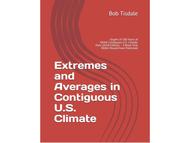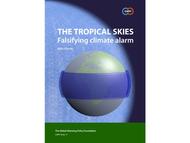“We hold these truths to be self-evident…”
Weather
Weather characteristics can be measured.
Weather events can be counted.
Weather event impacts can be measured.
Weather event frequency and severity can be documented.
Changes in weather event frequency and severity can be documented and compared.
Weather events cannot be predicted accurately on seasonal scales.
Changes in weather event frequency and severity cannot be predicted on annual scale.
Climate
Ideal climate is undefined.
Ideal climate is subjective.
Climate is weather over a 30-year period.
Climate changes.
Climate changed (natural variation) before human influence.
Natural variation continues.
Natural variation is not well understood.
Natural variation cannot be distinguished from anthropogenic influences.
Anthropogenic influences cannot be distinguished by source.
Anthropogenic influences cannot be measured.
Climate sensitivity to CO2 is not known.
Climate forcings are not known.
Climate feedbacks are not known.
Climate change is not consistent globally.
Climate change is not universally positive or negative.
Climate change has contributed to global greening.
Observations
Observations include measurements and counts.
Data are readings taken from measuring instruments.
Data are NOT all created equal.
Data measured with inaccurate instruments are inaccurate.
Data which are “adjusted” are no longer data, but merely estimates.
Numbers “infilled” where no data are available are not data.
Sets of “adjusted” data are not datasets, but merely estimate sets.
Sets containing “adjusted” and “infilled” components are mixed sets.
Data errors might or might not be random.
Biases cause non-random errors.
Errors in estimate sets are not random since the ‘adjustments” are not random.
Errors in mixed sets are not random, since the “infilling” process is not random.
The Law of Large Numbers does not apply to climate temperature data.
Climate temperature data are not identically distributed.
Climate temperature sets are not randomly generated after “adjustment”.
Climate temperature sets are not randomly generated after “infilling”.
Climate Models
Current climate models do not model all aspects of climate.
Current climate models do not accurately model past climate.
Current climate models do not accurately model current climate.
Current climate models cannot be expected to accurately model future climate.
Current climate models have not been verified.
Current climate models are not verifiable.
Current climate models are an unfit basis for policy decisions.
Climate models are being used to create worst case “scary scenarios”.
Scary scenarios contribute nothing to advancing the science.
Climate models are being used to conduct weather event impact attribution studies.
Attribution estimates cannot be verified.
Summary
It is far from self-evident that increased atmospheric CO2 concentrations are solely or predominantly responsible for observed changes in global climate.
It is far from self-evident that further increases in atmospheric CO2 concentrations have led or would lead to changes in precipitation, storm frequency or intensity, sea level rise, glacier and sea ice volume and extent.
It is self-evident that there are numerous unknowns regarding climate which must be researched thoroughly before the numerous factors which affect climate become self-evident.
It is self-evident that the governments of the nations of the globe are unprepared to control what they clearly do not understand.
It is self-evident that the time has not come to surrender our independence to a socialist global government in an effort to save ourselves from changes in a poorly understood global climate.
 The Right Insight is looking for writers who are qualified in our content areas. Learn More...
The Right Insight is looking for writers who are qualified in our content areas. Learn More...






